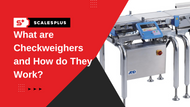What is a Checkweigher and How Do They Work?
Posted by Jon M on Feb 28th 2024
Checkweighers play a significant role in achieving accuracy, efficiency and quality in modern industrial applications. Whether it's manufacturing, logistics, pharmaceuticals or food production, maintaining precise measurements and increasing productivity is essential. In this blog post, we will cover what a checkweigher is, how they work and explore their importance in various sectors.
What is a Checkweigher?
Checkweighers are specialized weighing devices designed to ensure that products meet specific weight criteria. Unlike standard scales that simply display the weight of an item, checkweighing scales go a step further by comparing the measured weight to a pre-set target weight or weight range. A visual or audible alarm confirms to the operator when a product is within the target. These scales are commonly used in industries where precision and quality matters, such as food and beverage, packaging, pharmaceuticals, manufacturing, and logistics.
How Checkweighers Work
Checkweighers use a combination of hardware and software to carry out their functions. The process begins when an item is placed on the scale's weighing platform. The scale's load cell, a sensor that converts the weight of an object into an electrical signal, detects the weight of the item. The load cell sends the weight measurement to the scale's internal computer or controller. This weight data is then processed and displayed on the scale's screen.
 What are Load Cells and How Do They Work?
What are Load Cells and How Do They Work?
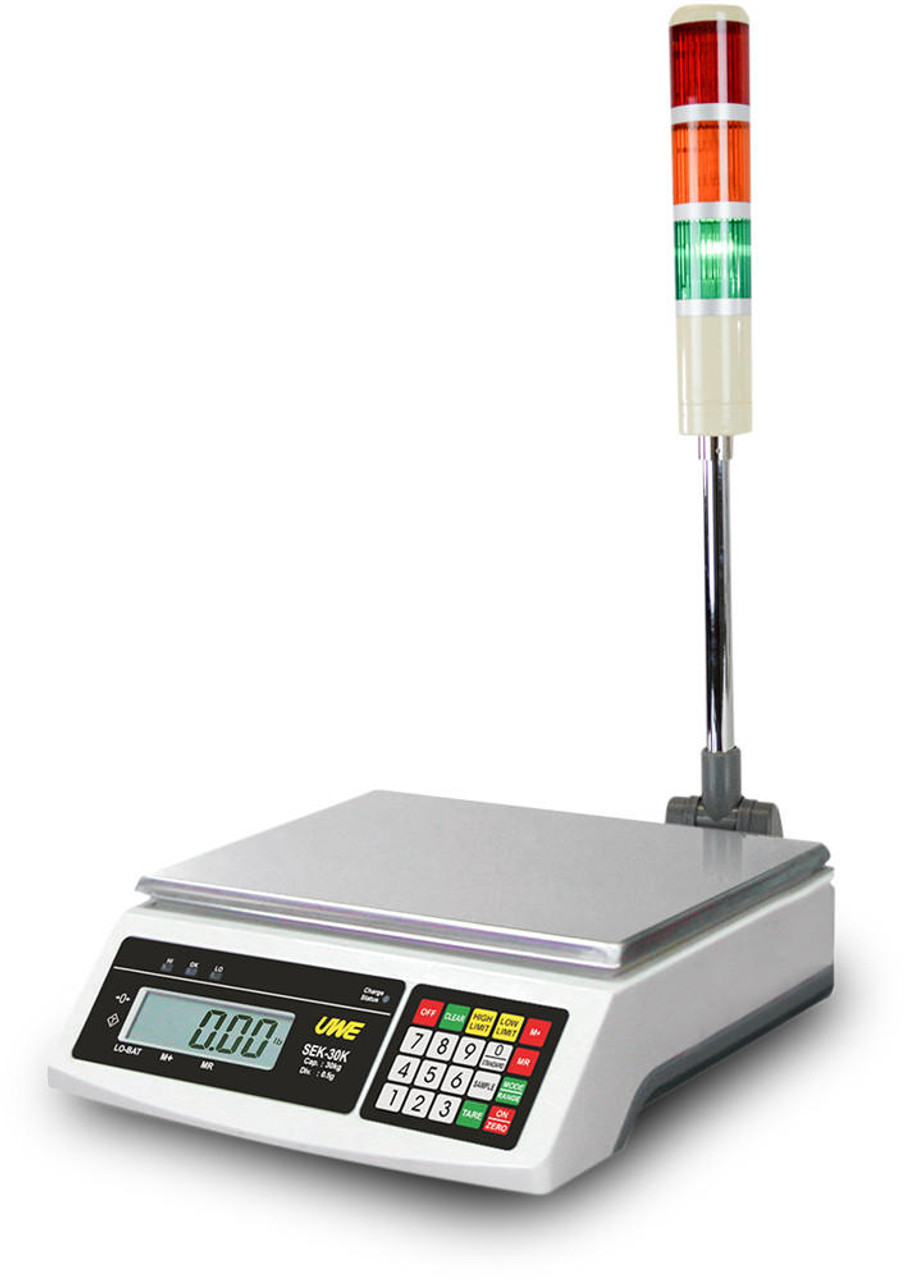
Checkweighing scales use a predetermined target weight or weight range stored in their memory. This target weight is set and saved by the operator. The controller compares the measured weight of the item to this target weight. Based on the comparison, the scale's software makes a decision about the item's weight. If the measured weight falls within the acceptable range (usually indicated by a green light), the item is considered to be of the correct weight. If the measured weight deviates from the target weight (indicated by a red or yellow light), the item is flagged as either underweight or overweight. Some checkweighers have indicator lights built into the controller, while others may include an auxiliary light tower (pictured to the right).
Depending on the industry and the specific application, the scale might trigger various actions. In a food production line, for instance, an underweight package might be rejected or diverted for reweighing or corrective action. Similarly, in a logistics setting, overweight items might be redirected for further inspection.
Benefits of Checkweighers
Quality Control: In industries like pharmaceuticals and food production, maintaining consistent product weights is vital to ensure the quality, safety, and efficacy of products. Checkweighing scales help identify variations that could result from factors such as ingredient inconsistencies or production errors. Checkweighers with labeling systems make the process of portioning and package labeling quicker and more efficient.
Regulatory Compliance: Many industries are subject to strict regulations regarding product weights. Checkweighers assist businesses in adhering to these regulations and avoiding potential legal issues.
Efficiency: By quickly identifying underweight or overweight items, checkweighing scales help prevent defective products from entering the market, reducing waste and production costs. Manufacturers rely on these devices to ensure timely and accurate production cycles.
Process Optimization: Checkweighing scales provide real-time data that manufacturers can analyze to identify patterns and trends in their production processes. This data can help streamline operations, improve overall efficiency and allow businesses to identify and correct quality issues quickly.
Consumer Satisfaction: In sectors like retail, accurate product weights contribute to customer satisfaction. Consumers expect to receive the exact quantity of product they paid for, and checkweighers help businesses meet this expectation.
Inventory Management: Logistics and warehousing benefit from accurate measurements for proper inventory management. Checkweighing scales help prevent overstocking or understocking by ensuring that products are correctly measured and accounted for.
Types of Checkweighing Scales
There are several types of checkweighing scales designed to suit different industries and applications. High-throughput facilities may opt for a high-speed in-motion checkweigher, while static benchtop checkweighers may suffice for smaller volume processes or individual product inspection.
In-Motion Checkweighers: These scales are used in high-speed production lines where items are weighed while in motion. They are commonly seen in industries like packaging and inspection, where products move along a conveyor belt. In-motion checkweighers are some of the most advanced checkweighing systems, often including additional communication and data capabilities, rejector options and automation functions.
A&D Weighing in-motion checkweighers are a great example of these types of scales. They offer high-speed checkweighing and work in tandem with conveyor lines, automated rejectors and data capturing software.
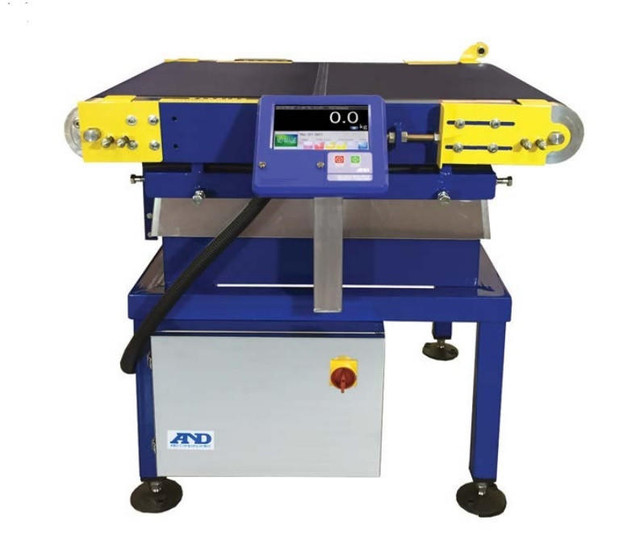
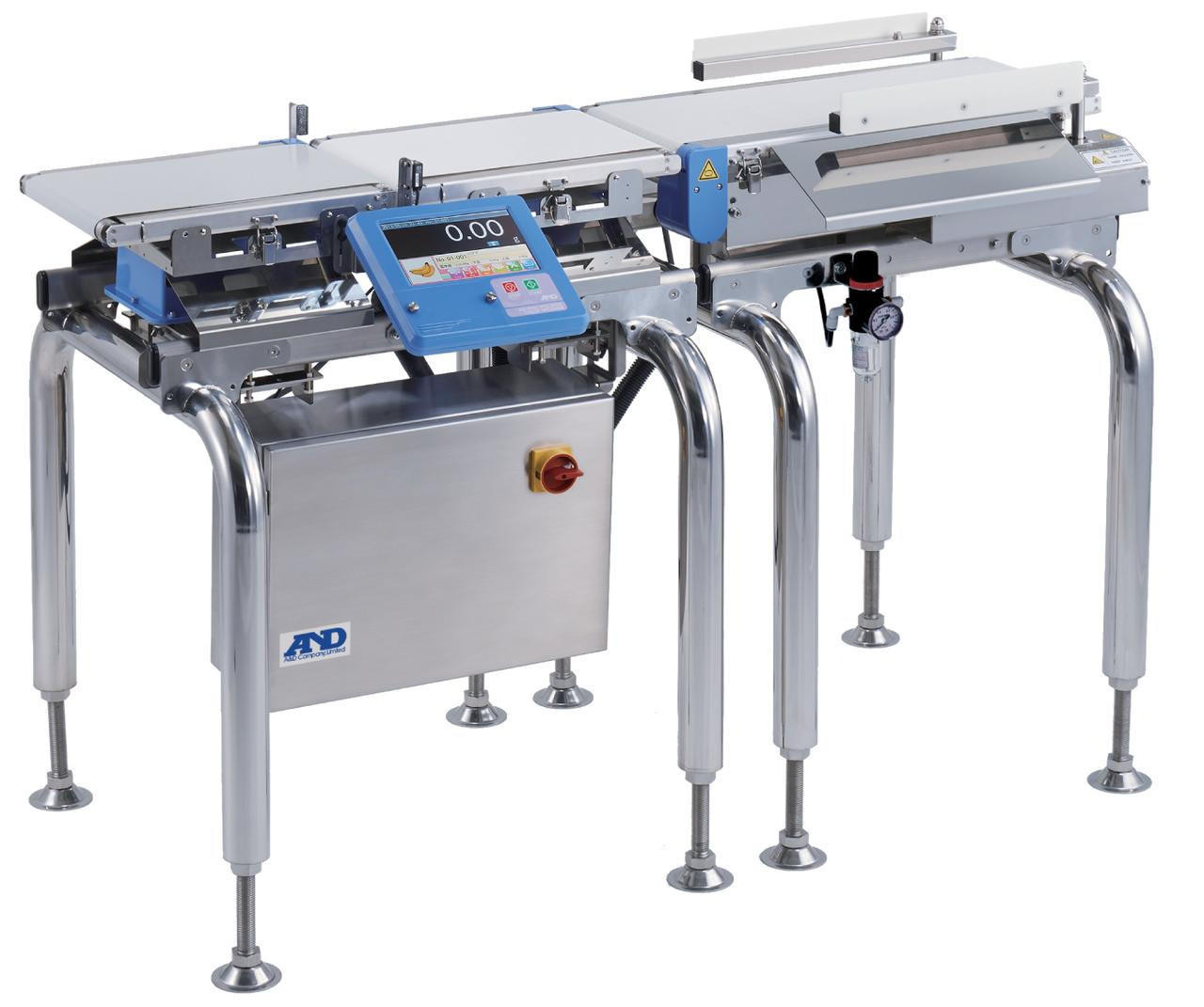
Static Checkweighers: Static checkweighing scales, or benchtop checkweighers, are the most common type sold by Scales Plus. They are suitable for smaller production batches or items that need to be weighed individually and are widely used in quality control processes, inventory management and small batch packaging.
One of the most popular benchtop models we offer currently are the UWE SEK checkweighing scales.

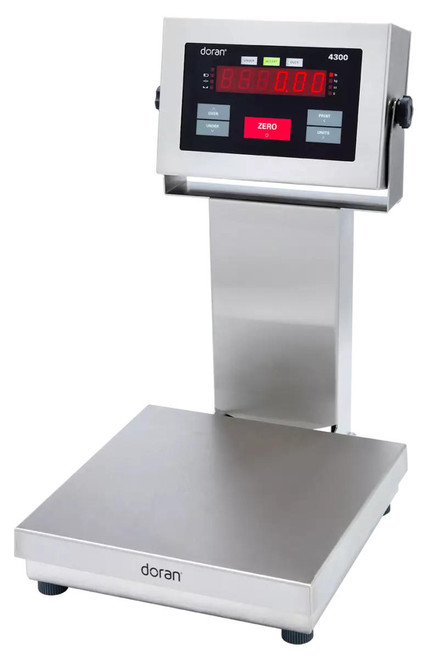
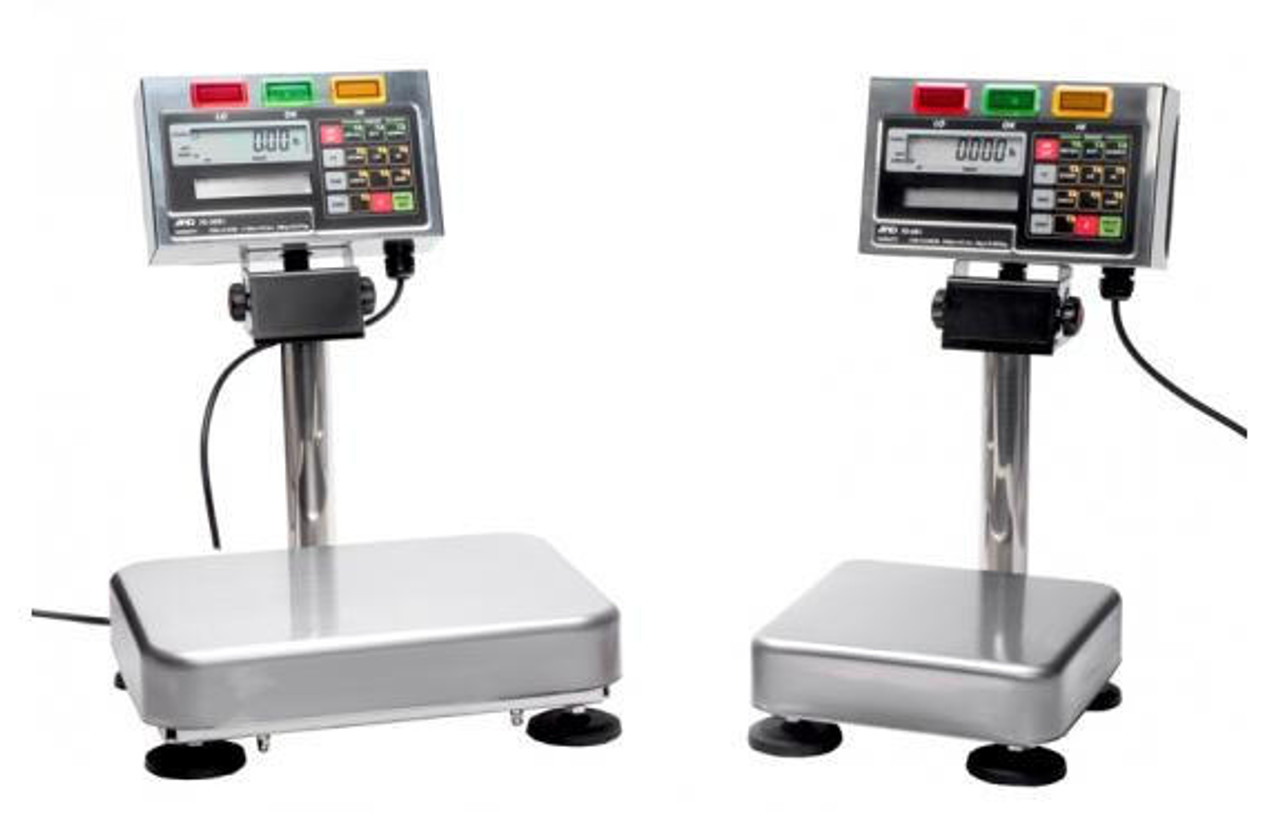
Checkcounting Scales: Some checkweighing scales include a "checkcounting" mode which combines both counting and checkweighing functions. In this mode, the scale is able to calculate the amount of pieces on the scale using the weight of an individual piece to determine the overall quantity. The scale will then determine if the piece count is within the target quantity set by the operator, and indicate that it is acceptable, over or under. This is a particularly useful function for inventory management of a large quantity of small components.
 How Does a Counting Scale Work?
How Does a Counting Scale Work?
Combination Systems: Some checkweighing scales come equipped with additional functionalities, such as metal detection or X-ray inspection, to ensure both weight accuracy and product integrity. These are commonly used in the food and pharmaceutical industries where there is elevated concern for contamination or foreign materials that could be inadvertently consumed by customers. Metal detection and X-ray inspection checkweighers are far more complex than a standard checkweigher, requiring substantial evaluation and quoting processes before they are sold.
Tips for Using Checkweighing Scales Effectively
Operator Training: Ensure that personnel operating the scales are properly trained to use them. Mistakes during the weighing process can lead to inaccurate results. Many benchtop checkweighers are easy-to-use and require minimal training. However, more advanced systems, such as in-motion checkweighers, require a more elevated understanding through sufficient training.
Integration with Software: Many modern checkweighing scales can integrate with software systems for data analysis and reporting. The ability to collect and manage data can lead to significant productivity improvements. Explore these capabilities to optimize your operations.
Consider the Environment: Take careful consideration of the environment the checkweigher will be used. Make sure the scale is placed on a stable surface, is distant from any significant drafts or vibrations and in an area free of excessive dust and moisture. Look for a checkweighing scale with a higher ingress protection rating (IP) if you intend to use the scale in harsh environments. These models feature additional protection from the ingress of dust and liquids, which protects critical components and helps to maintain reliable performance.
Calibration: Regularly calibrations ensure continuous accuracy. Environmental factors, such as temperature and humidity changes, can affect measurements over time. An overloaded scale may also lose it's calibration, which is why it is critical to perform regular calibration checks.
Maintenance: Keep the scale clean and well-maintained to ensure accurate readings. Dust, debris, and excessive wear will impact performance, leading to unnecessary downtime and a reduction in productivity.
Conclusion
Checkweighers are critical pieces of equipment in industries where precision measurements are essential. By comparing measured weights to target weights, these scales help maintain quality, compliance, and efficiency across various sectors. With their ability to prevent defective products from reaching consumers and streamline production processes, checkweighing scales have become common in modern manufacturing and logistics. As technology continues to advance, we can expect further enhancements in the accuracy, speed, and capabilities of these scales, driving innovation across industries that rely on precision measurements.
--
Scales Plus is a leading distributor and service provider representing many of today's most trusted checkweighing scale manufacturers including OHAUS, Rice Lake Weighing Systems, Doran, A&D Weighing, Adam Equipment, UWE and more.
Need help choosing the right scale? Do you need technical assistance? Contact Scales Plus today!

